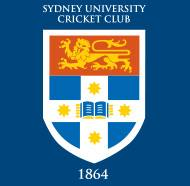Geoff Lovell - keep the game moving forward
Sydney University Cricket Club | January 27, 2023
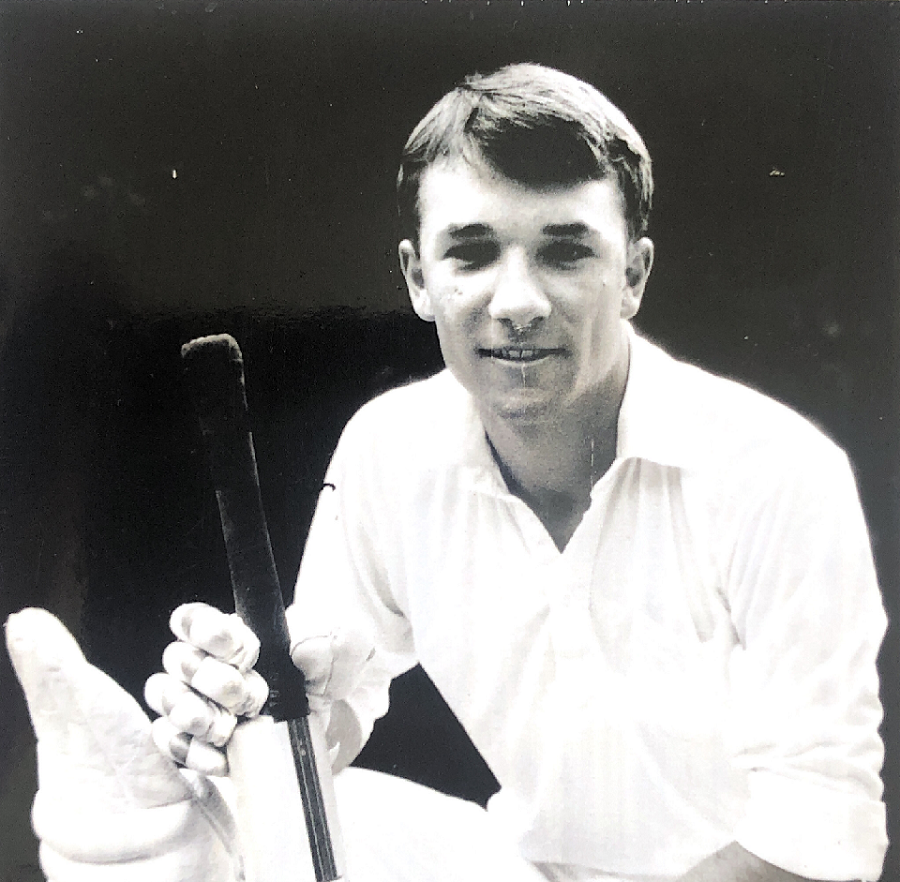
Geoff Lovell became Sydney University Cricket player number 554 after making his first grade debut for the club during the 1985/86 season. Geoff had joined Sydney University after starting his grade cricket career with Gordon Cricket Club.
Geoff is a Life Member of Sydney University Cricket Club. He was selected in the Sydney Uni’s team of the 1980’s and was awarded a Sydney University Blue for cricket in 1988.
In 1990 Geoff Lovell had the distinction of being the inaugural recipient of the Bradman Scholarship which we will find out more through Geoff’s wonderful and insightful journey.
Playing for Oxford University Geoff played 26 first class games scoring 1,061 runs at 32.15 including two centuries.
Let’s find out more about Geoff Lovell
What year you were born?
1966
Can you remember you first game of cricket?
Yes, it was for Kissing Point Under 10’s at Browns Field in Wahroonga. I scored a duck and we were bowled out for 12. I vividly recall batting against a brand new red ball, the dewy field of an early morning start and the nerves of my first cricket match. We did a little better in the second innings, when I edged a boundary. I did much better with my bowling.
Tell us briefly about your cricketing journey?
After Kissing Point, I went to Shore where I played almost exclusively until the end of high school. I trialled for Green Shield with Northern District and then with Gordon – I was selected for one match for ND’s but it was washed out. I remember turning up to training at Waitara Oval as a 14-year-old and batting in the turf nets against Mark Clews and Steve Whitfield. Would that still happen today, I wonder?
As a kid I played just one match each weekend with no junior representative cricket – unlike the overkill these days. At the age of 15 I was fortunate to be picked in the Shore 1st XI, playing alongside Phil Emery who was to become a key mentor in my early years. I was fit from doing athletics, scored 83 in my first innings and developed from there. I played for the Shore 1st XI and the GPS 1st XI for 3 seasons (1981 to 84), captaining both in my final season, was picked in the NSW Schoolboys’ XI in 1983 (travelling to Melbourne with the Waugh twins, Gavin Robertson, Mark England, Mark Patterson and others) and again in 1984. In 1984-85 I played for NSW in the Australian Under 19 carnival in Hobart, where we snatched defeat from the jaws of victory against Victoria in the Final. It still bugs me.

I played Grade cricket for Gordon and Sydney University. I had three years in England playing mainly for Oxford University (and also a wandering club called The Arabs with EW ‘Jim’ Swanton). And for the last 25 years or so I have played semi-regularly for I Zingari. I still play 8-10 games each season, purely for enjoyment, but now being 54 years of age my capacity to keep going is diminishing.
I should add that cricket is in my genes – I was on the sidelines of my father’s cricket as a young kid – he played every Saturday for Sydney Uni Vets in City and Suburban cricket – and his mother Dixie Dettmann trialled for the Australian Women’s team to tour England in 1937.
In which grade and at what age did you make your debut in grade cricket?
I played Poidevin-Gray for Gordon in 1983-84 at the age of 17. The following season, as I was leaving school, I started in Second Grade for Gordon: the first match was against Parramatta at Old Kings and I scored 79.
At what age did you make your First Grade debut and can you remember how you performed?
After two games opening the batting in Second Grade in 1984, I was promoted to First Grade while I was still at school (just). In my first match we played Randwick at Coogee Oval - Australian opening bowler Mike Whitney was making a comeback from injury. It was a green top - our captain and my opening batting partner Rowan McGregor won the toss and incomprehensibly chose to bat! The ball fizzed past my nose multiple times. I think I scored 6 and we lost. The next match at Chatswood Oval was against a Western Suburbs side which included another incumbent Australian fast bowler in Dave Gilbert, plus Dirk Wellham, Greg Dyer, Greg Matthews and Brad McNamara (who scored his first First Grade hundred in the match). I fared little better. I think the next game was against Bankstown at Bankstown Oval in a one-day match – it was the first time an orange ‘fluorescent’ ball was trialled and we had to change it multiple times. Rod Bower was particularly brutal that day – I remember him hitting Richard Stobo off the back foot over long off and into the canal outside the southern end of the ground. Steve Waugh piled on the runs to finish on about 140 not out. Those were the days when Test and Sheffield Shield players would regularly play Grade cricket – which meant Grade cricket was the essential ‘pathway’ to higher honours (rather than the artificial pathways that have now been created).
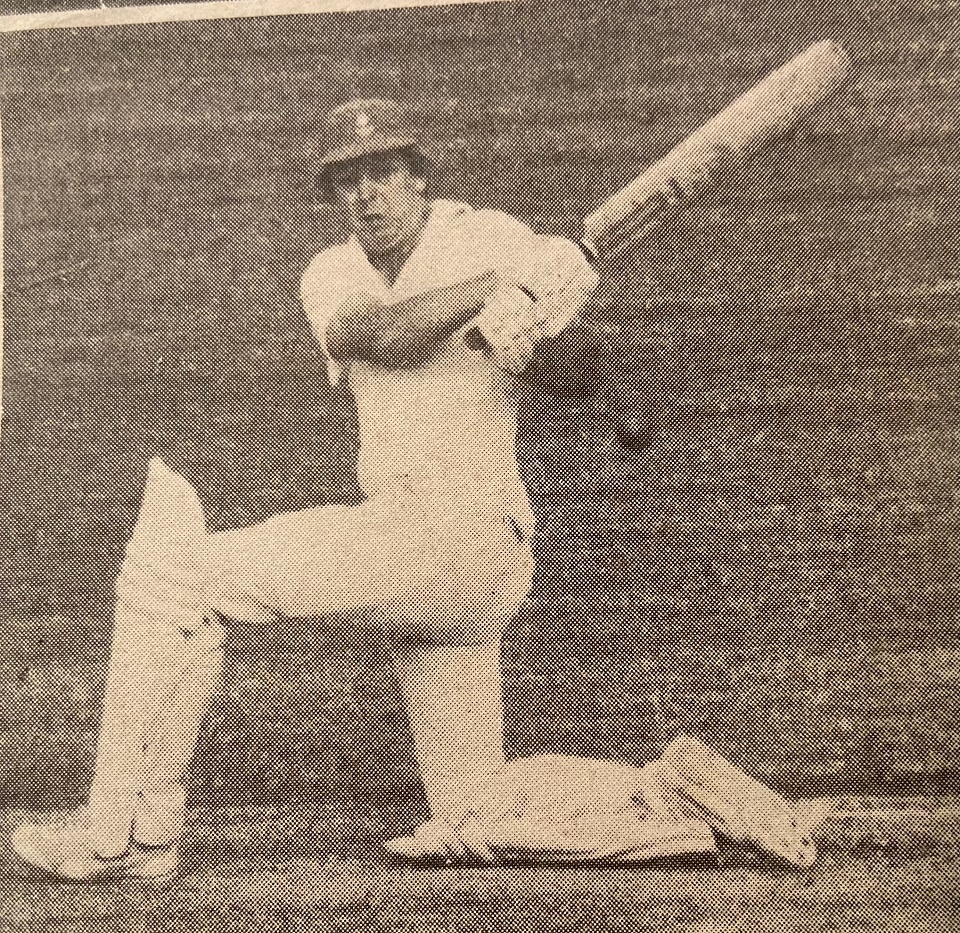
Rowan McGregor
Soon after that baptism of fire I returned to Second Grade and we made the Semi-finals.
The following season (1985-86) I went across to Sydney University, where I had started studying engineering and was living on campus. I played the remainder of my Grade cricket there, until 1996-97. It was at Sydney Uni that I got the nickname ‘GBT’ which has stuck to this day. I had foolishly written my name on my thigh pad as ‘GBT Lovell’. Everyone found that amusing and it started as a form of mockery for my private school upbringing. Of course, it wasn’t my fault that they were my initials!
If you can share with our audience, how would you describe yourself as a cricketer?
Right-hand batsman, whose bowling deteriorated the more I played (mainly through lack of opportunity). I stood at first slip for most of my career and took up wicket-keeping later on, following on from my father and grandmother.
What were your strengths as a player?
I think I was technically good, hence batting at the top of the order. People would say I was an elegant batsman but that is their opinion, not mine. I always liked to keep the game moving when batting. To be honest, my weakness was my mental game and lack of patience. I was not ruthless enough.
I believe the two hardest yet most exhilarating shots in cricket are the hook shot and the straight on drive. I knew I was on song when these shots were working for me.
You were the first recipient of the Bradman Scholarship in 1990, can you share with us what it meant to you and what did the scholarship do for you back then?
Talk about being in the right place at the right time. I had just completed my honours degree in engineering and was at the peak of my time in First Grade at Sydney Uni. The Bradman Trust had just been launched and, in their eternal wisdom, they established a scholarship to Oxford to promote Bradman’s legacy with a youthful dimension. I was chosen as the inaugural Bradman Scholar through an application and interview process. In September 1990 I set off to Oxford for three years, a priceless opportunity which is no longer offered. As many told me at the time, and as I came to learn quickly, bearing the Bradman name comes with privilege and responsibility. To some extent, I carry that to this day.
With the endorsement of Sir Donald, whom I met at his home in Adelaide on a couple of occasions, the doors of English cricket were opened to me. It was all a dream come true.
I have often thought I should write a memoir of my wonderful experiences in England, which were of course not just about cricket. Perhaps I will do that shortly.

Sir Donald Bradman with Goeff Lovell
When you moved to the UK was it to play cricket or for study?
Both cricket and study. Entry to Oxford is based on academic merit; cricket was my ticket to move up the queue. Having studied engineering in Sydney, I had the choice of any course at Oxford and chose Philosophy, Politics and Economics (PPE), one of the courses for which Oxford is famous.
Exeter College at Oxford was keen to adopt the Bradman scholarship in the first instance – the Head of the College Sir Richard Norman was an avid cricket fan. I’m sure he was lobbied by the likes of Sir Colin Cowdrey and MJK Smith, both former England captains who had played for Oxford as students. Sydney barrister Bruce Collins QC had been a driving force in the establishment of the Bradman Museum and Scholarship, and his colleague Justice Murray Tobias QC had studied at Exeter College himself, so developed the connection.
I believe I vindicated those who selected me. I was awarded an Oxford Blue in each of the three years I was there (Blues are awarded for playing in the three-day Varsity Match against Cambridge, which was then played at Lord’s – the Varsity Match is the original first class match, first played in 1827 at Lord’s). I was Captain of Oxford University Cricket Club in 1992 and played for Combined Universities against Pakistan in 1992 and Australia in 1993.
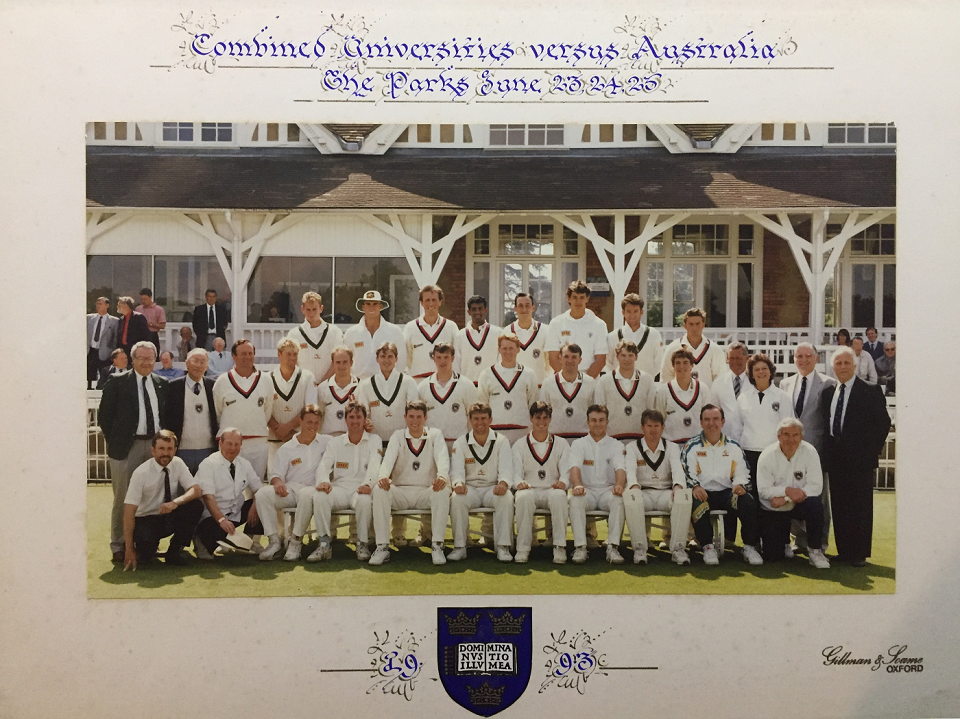
I had the privilege of captaining the Oxford side to Namibia in 1991, where we played in a tournament involving Namibia, Zambia, Botswana, Malawi and Lesotho. It was just prior to the end of apartheid in South Africa and a wonderful opportunity to promote cricket in that part of the world.
Happily, I also managed to gain First Class Honours for my Oxford degree in PPE.
What was your highest score in senior cricket?
My highest score in Sydney Grade cricket was 168 for Sydney Uni versus Fairfield-Liverpool at Uni in 1989-90. In England, I scored two first class centuries – 110 not out against Glamorgan at Oxford in 1992 and 114 against Cambridge University at Lord’s in 1993.
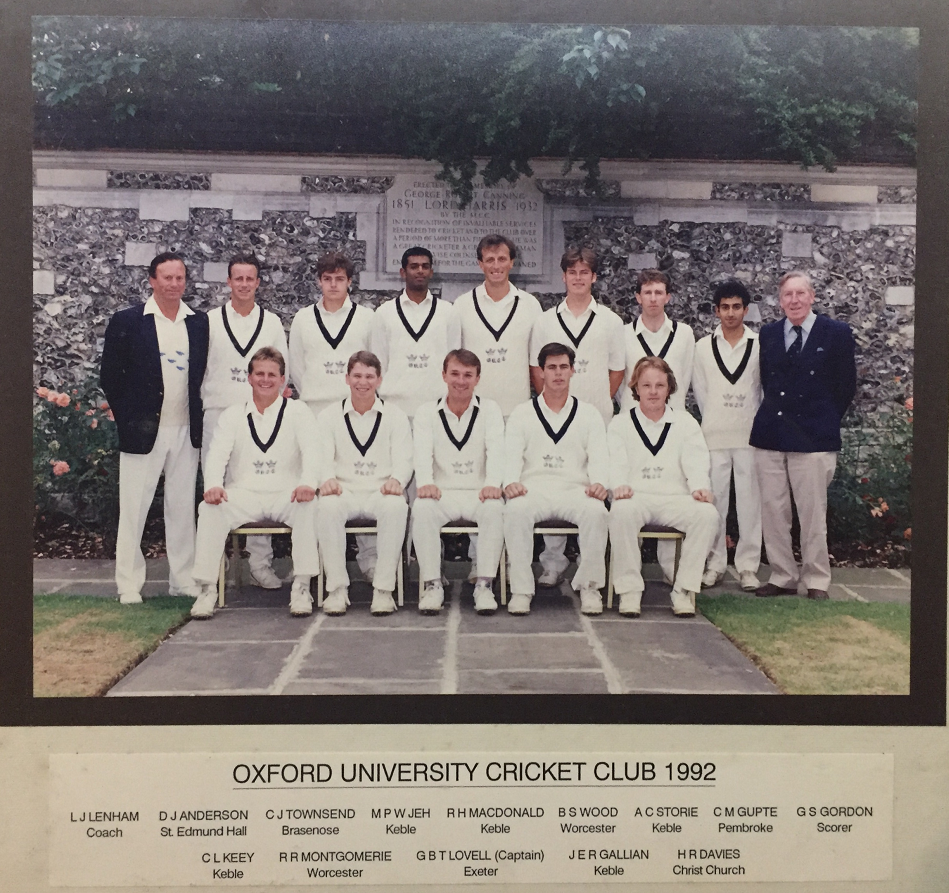
What were your best bowling figures in senior cricket?
There is not much to say here, other than that I took one first class wicket – an unlucky Nottinghamshire batsman named Kevin Evans, caught behind for 13 by our wicket keeper standing up to my medium pacers. My first class bowling average is 141.0!
Who were the best three fast bowlers you have played against?
A highlight of my career was batting against Malcolm Marshall in 1993. I was playing for Combined Universities against Hampshire in a Benson and Hedges Cup (55 overs a side) match. It was Hampshire’s first match of the season at Southampton, and David Gower’s first match for Hampshire, so there was quite a large crowd there. The Hampshire side also included Robin Smith and Mark Nicholas as their captain. Batting first, I went in at number 3 in the second over, batting with John Crawley who later played for England. Facing Marshall was surreal – here was one of the world’s best bowlers, whom I had watched for years on TV, running in on his angled run-up to bowl at me. I cut one of his deliveries for four and the crowd applauded very generously – that was surreal too and the only time it ever happened to me. Marshall was very crafty, shortening his run up, bowling the odd slower ball, swinging it both ways. I somehow survived his opening spell, only to be caught behind shortly afterwards to a left-arm spin bowler for 18. Damn!
I used to be terrified facing Andrew Jones in Sydney Grade cricket, probably the quickest bowler I have faced. ‘Milton’ had a very fast bouncer and, as a left armer, he could swing the ball into the right-hand batsman – in combination, a batsman’s worst nightmare. I first came across him when I played for GPS 1st XI in 1982 as a 16-year-old: Milton was playing for Combined High Schools (CHS) with Steve and Mark Waugh, Mark England, David Freedman and Justin Kenny. The original ground was unfit for play, so we moved to another ground nearby which was hastily prepared in damp conditions. Tom Brooks was umpiring. It was later discovered that the creases were marked a metre shorter than normal, but that was not before Andrew Jones had hit me in the forehead when I tried to hook him. There were no helmets then. I had to go off to recover – I had my mother and Neil Marks, who knew each other, tending to me in the dressing room. Without a doctor in sight, I later went back out and made 40 despite being flummoxed by David Freedman’s left arm wrong’uns.
Several years later I played against Andrew again at Drummoyne Oval in a First Grade match. Balmain club legend and former Cricket Australia Chairman Fred Bennett had died unexpectedly the night before and the Balmain players wore black armbands as a mark of respect. Jones seemed particularly fired up to pay his respects in another way. I remember attempting a defensive shot to a short delivery – the ball hit the inside shoulder of my bat and bounced just inside the fine leg boundary. I played against Andrew a few years ago when he was playing for the SCG XI – I was very happy to see him bowling left arm orthodox!
I will also mention Glenn McGrath, who I played against once in a First Grade match at Caringbah Oval (now Glenn McGrath Oval) when he had just moved to Sydney to play for Sutherland, living in a local caravan park. I still remember this young, slightly gangly bowler running in to bowl to me. I batted throughout the first session for about 40 but then edged him to Justin Kenny at second slip just after the lunch break.
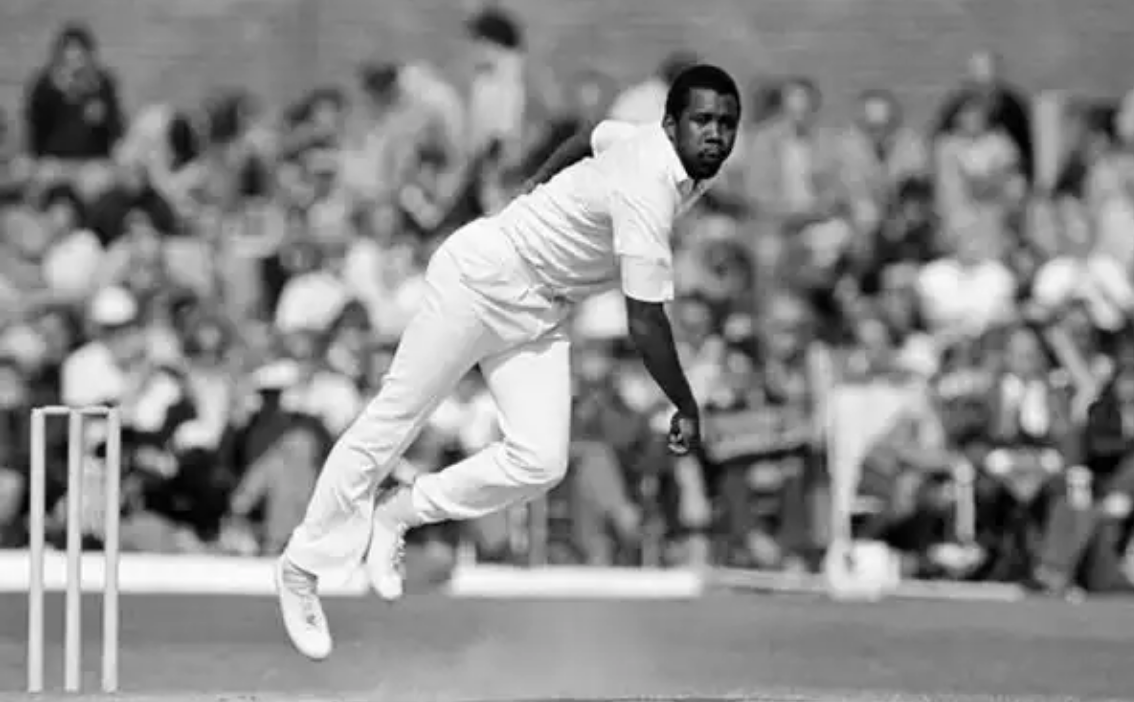
Malcolm Marshall
Who were the best three spinners you have played against?
I am recorded as one of Shane Warne’s first class wickets. On Australia’s 1993 tour of England, Combined Universities played a three-day match against Australia in The Parks at Oxford. Just 20 days after Warne had bowled his ‘ball of the century’ to Mike Gatting at Old Trafford, there was I trying to prevent him doing the same to me. Having reached 20, I fell out of my crease to a ball which drifted in, dropped and spun past my outside edge. Tim Zoehrer took off the bails as I was left stranded just outside my crease. I wish I could say I had danced down the wicket to hit Warne back over his head, but it was actually a rather innocuous dismissal.
The season before Combined Universities had played Pakistan at Fenner’s (Cambridge University’s home ground) where I faced a lot of Mushtaq Ahmed. In the first innings I played back to Mushtaq’s wrong’un and was out LBW for 2. In the second innings, I managed to read him much better and scored 96 before being caught behind by Moin Khan off his bowling, playing a shot which I thought would take me to my century. Mushtaq spun the ball prodigiously, much in the style of his predecessor Abdul Qadir, taking 9 wickets in the match from 62 overs. He took 15 wickets in the Test series against England that year, won 2-1 by Pakistan.
To throw in an off spinner, I would nominate Greg Matthews who I played against a number of times in Grade cricket (“no-one cuts the King”). I also played a match at Oxford against MCC, facing two former England off spinners, Geoff Miller and Peter Willey, bowling in tandem. I rated Geoff Miller much more highly – he generated drift, dip and spin in much the same way as a top class wrist spinner does.
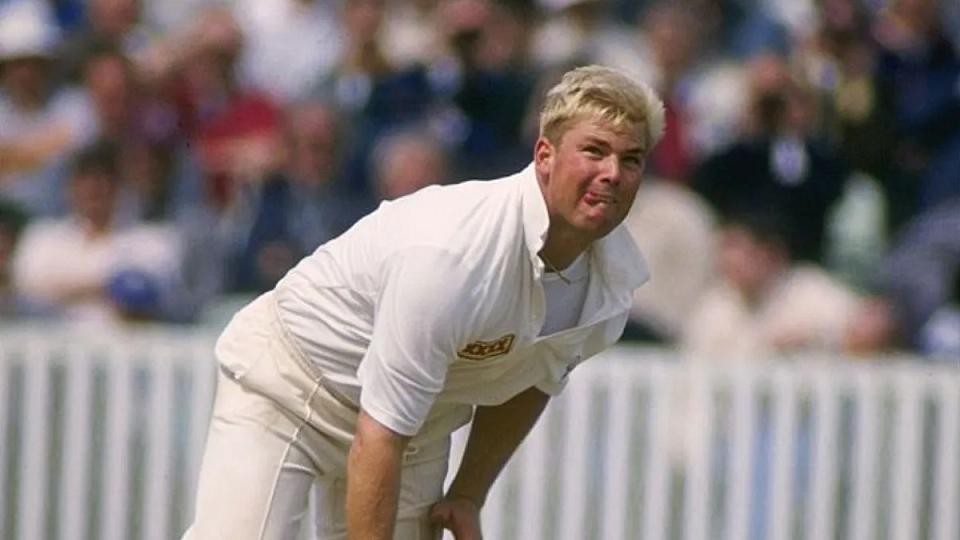
Shane Warne
Who were the best 3 batsman you’ve played against?
I was lucky enough to play against the great Viv Richards in 1993 – he was playing for Glamorgan against Oxford in the twilight of his career. He scored 109 not out from 94 balls, perhaps the most insignificant of his 114 first class centuries. In 2001, I was in a deserted Qantas Club lounge in Adelaide the day after attending Sir Donald Bradman’s memorial service, which Viv Richards also attended. Seeing him sitting alone in the lounge I approached him to strike up a conversation - he was very warm and generous. As soon as I mentioned that I played against him in The Parks at Oxford in 1993 when he was playing for Glamorgan, he responded, “I scored a hundred that day, didn’t I?” It was proof that a cricketer remembers every innings of his or her career!
Many years later, I played a charity match with Viv at the University of Wollongong organised by Adam Gilchrist. Our top order was Carl Hooper, Graeme Hick, Brian Lara and Viv Richards. Listed down at number 8, I naturally wasn’t needed.
As I said earlier, David Gower played in the match against Hampshire at Southampton in 1993. Like Marshall, Gower was in the twilight of his career. It was his first match for Hampshire and the crowd had waited all match to see him bat. Coming in at 1-67 chasing 178 to win, he played terribly at first, mistiming the ball regularly. But then, against our right arm off spinner, he rocked back and caressed the ball past me at cover point to the boundary. It was worth the price of admission alone. He went on to score 41 not out. Gower had been one of my favourite players growing up when he toured Australia in 1978-89 – I also had the Gray Nicholls quadruple scoop which he used in that series (my grandparents brought it back from England before it was available in Australia).
I was a much less talented contemporary of Steve and Mark Waugh, playing with and against them on occasion. It was very special watching them develop into two of Australia’s finest cricketers.
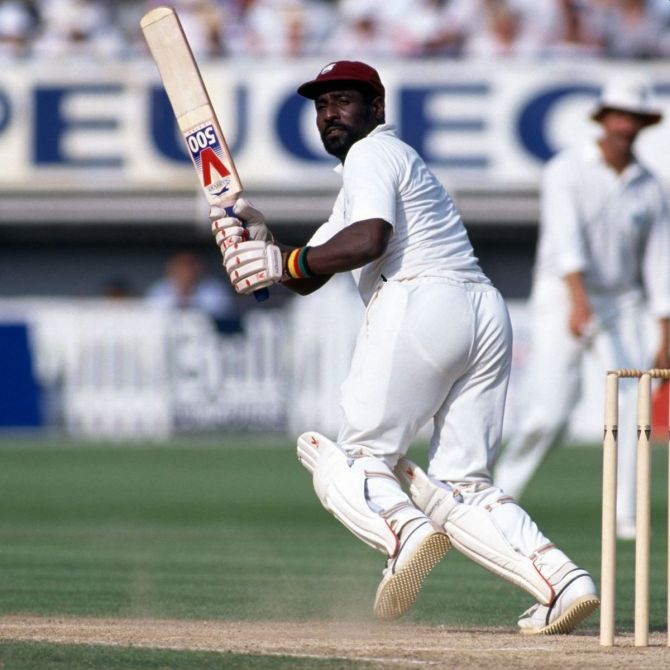
Viv Richards
What’s the best win you’ve been involved with?
In my first season playing for Oxford (1991), I was puzzled that County teams would come to Oxford to play three-day first class matches and essentially use them for batting practice. Oxford seemed complicit in this and would invariably allow them to bat first, sometimes well into the second day.
So, when I was captain in 1992, I set a goal for our team to win a match during the season. I made a special point of asking each opposing captain what their hopes for the game were, seeking a contest. Many captains ignored me – I remember Neil Fairbrother of Lancashire saying, “just toss the f***ing coin!”.
When we played Middlesex, Mike Gatting was much more receptive. As well as Gatting, their team included England bowlers Angus Fraser, Phil Tufnell and Dean Headley. To Gatting’s great credit, he declared on the last day to set us 212 to win from about 50 overs and handed the on-field captaincy to Angus Fraser. We got the runs five wickets down, with Richard Montgomerie (who later played many years for Northants and Sussex) making 103 not out. It was Oxford’s first win against a first class County since 1974, when Imran Khan was Oxford’s captain. When I saw Mike Gatting about three years ago in Sydney, I reminded him of the match and thanked him again. He remembered it well - another example of cricketers never forgetting anything that happened on the field!

Mike Gatting
Who played the best innings you’ve seen firsthand playing with or against?
I will mention three innings.
Playing for CHS First XI against GPS in 1983 at The Scots College in Bellevue Hill, Steve Waugh scored 170 not out. They batted first on a soft wicket which was not easy to bat on. We got Mark Waugh out caught for 25 when he skied a pull shot. Steve initially battled his way in difficult conditions and then, as the pitch dried out, began to dominate. Our young leg spinner Jeff Dight suffered terribly with several balls landing on the adjacent tennis courts. It was an early glimpse of a world class player in the making.
In 1992, in the match against Pakistan at Fenner’s, Inzamam Ul-Haq scored an undefeated 200 out of 255 runs while he was at the wicket. He was never known for his running between the wickets and didn’t need to do much of that in this innings. His hitting was among the hardest I have seen firsthand, rivalled perhaps only by Scott Hookey. At one point he hit the ball so flat and hard that our long off fieldsman could have caught it at head height – but he withdrew his hands for fear of breaking something. Gutless!
Finally, in 1993 at Oxford, Jason Gallian scored 141 not out from 214 balls as we chased down 257 to win outright against Nottinghamshire. It was Oxford’s second win since 1974! Jason and I were batting together as we put on the final 50 runs for victory, so I got to see part of Jason’s remarkable innings from the other end. Notts had then England bowler Chris Lewis playing – he went wicketless in that innings and Jason dominated him. Jason was a terrific competitor, who had captained Australia’s Under 19 side and was on his way to qualifying for England, for whom he played three Test matches two years later. I think this innings was an important part of that journey.
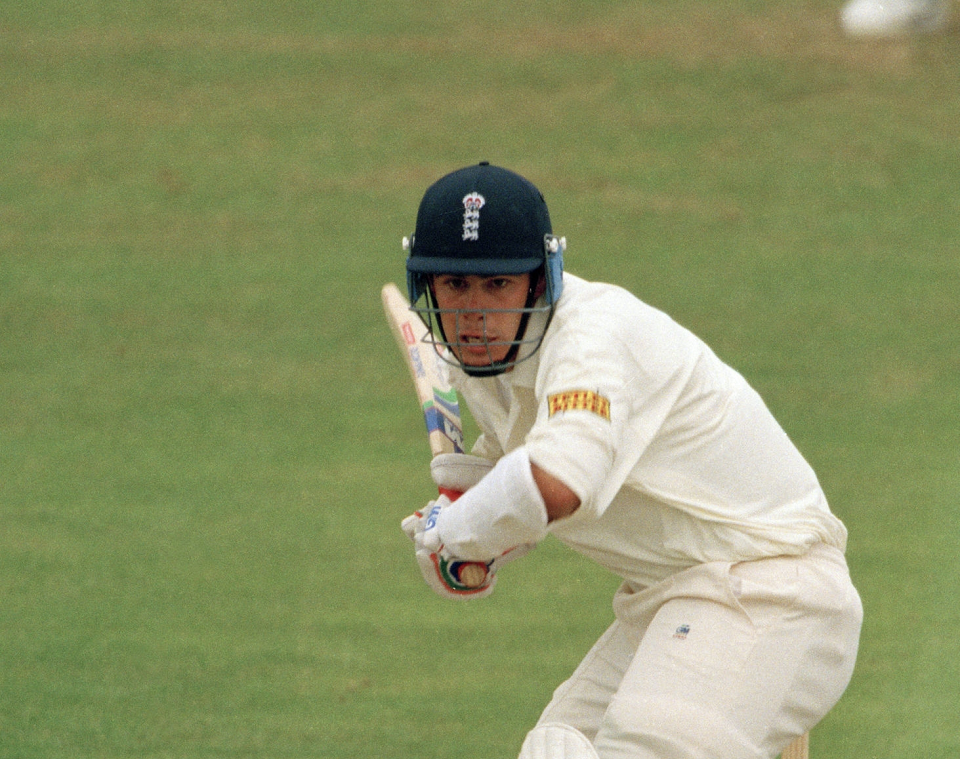
Jason Gallian
Who was the best wicket keeper you’ve seen firsthand playing with or against?
I first saw Steve Rixon in 1983 when I played with him as a 17-year-old in the Primary Club’s annual charity match at their Lemon Tree ground in Dooralong. I was amazed by his natural keeping instincts standing up to the stumps. I later came across ‘Stumper’ in Grade cricket a couple of times and would still argue he is Australia’s best wicket keeper in my lifetime. If not for joining the rebel tour to South Africa in 1985, Rixon would likely have played a lot more for Australia. I was also fortunate to play at school and at Gordon with Rixon’s star pupil, Phil Emery. I would also mention my great friend Richard Bennison who I played with at Sydney University.
One unusual keeper to mention is England’s football captain Gary Lineker, who kept wicket for JP Getty’s XI in a match at Wormsley in 1992. He was clearly a very talented all-round sportsman. I chatted with him while Phil Edmonds was bowling to me – Lineker was a true gentleman. Edmonds was different – at lunch he challenged my wife Melanie that women had no innate ambition. Melanie took offence, politely. She is now a Professor of Medicine.
(As an aside, other players in that Primary Club match were Ian Chappell – with whom I batted briefly - Gary Gilmour, John Gleeson, Chetan Chauhan, Bob Simpson, Greg Matthews, Tony Greig, Alan Davidson, Doug Walters, John Benaud, Johnny Martin, Gordon Rorke, Len Pascoe, Ross Edwards, Grahame Corling, Greg Dyer, Peter Philpott, David Sincock and Graeme Watson. And then there was little me.)
Who are the two players you admired most in terms of skills and competitive spirit in the competitions you played?
I have already mentioned Jason Gallian – he was a tremendous competitor and a captain’s delight, who always relished the big contests.
John Saint joined Sydney University in 1989-90 from Penrith as a 20-year-old. I don’t think Uni had ever seen such a strong, fit and competitive man on the cricket field. Sainty transformed our First Grade side that season, with his fast bowling and aggressive batting. John went on to win the O’Reilly Medal in consecutive seasons (1993-94 and 1994-95) before moving to Tasmania where he played some first class cricket. He was a gentle giant in many ways and his late father Gary was our much-loved scorer.
I will also mention the late Mick O’Sullivan, a left arm orthodox spin bowler who is Sydney University’s all-time leading first grade wicket taker with 652 wickets over 25 seasons. ‘Micko’ was my first grade captain when I joined Uni in 1985 and I played with him throughout my time there. No one worked harder at his game and he absolutely made the most of his ability. Micko was a terrific role model and admired by all, not just at Sydney Uni but across all Sydney grade clubs.
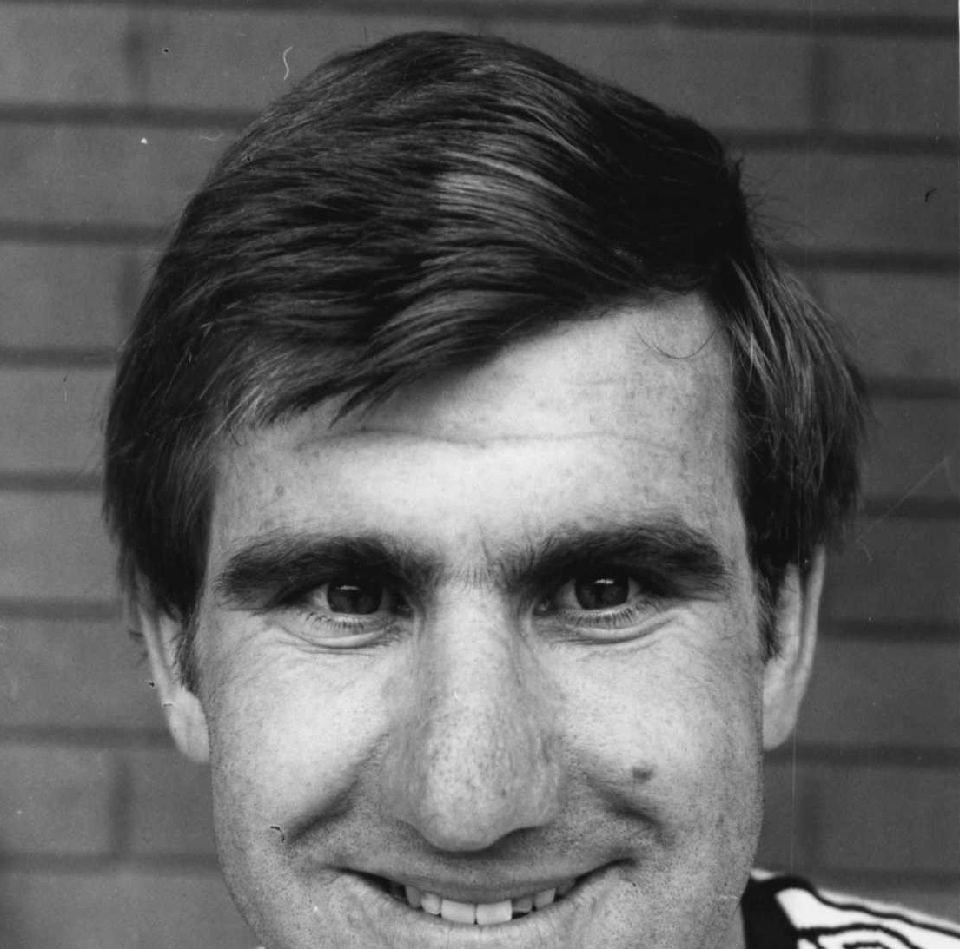
Mick O'Sullivan
Who was the best captain you had the good fortune to play with?
I have to say Mike Gatting for his declaration in 1992!
Can you recall some banter or an exchange on the cricket field that still makes you laugh today?
One that comes to mind was in a match at North Sydney Oval in about 1987. Darby Quoyle was a highly talented allrounder for Sydney Uni, who was unlucky not to achieve higher honours. On his day, he was one of the fastest bowlers around. He was running in to bowl to Vernon Kringas, who pulled away towards square leg when he got something in his eye. But Darby kept running in and, when Kringas challenged him why he was doing this, Darby simply said, “But I thought that was your first movement”.
Who was your childhood hero?
Rod Marsh and Greg Chappell. Indeed, pretty much the whole Australian team in the 1974-75 Ashes Series in Australia, when I was eight years old.
Who’s your favourite cricket commentator?
Kerry O’Keeffe, of course, for his combination of cricketing insight and festive sense of humour. Kerry coached the Sydney Uni Poidevin-Gray side in 1985-86 and 1986-87, which I captained. He befriended us young cricketers in a special way and we would have done anything for him. I hope Kerry wouldn’t mind me saying this, but it was a difficult period for him personally and I think we were his family in many ways. In the first season he coached us, we turned up one morning at Uni to find the wicket under water. We were surprised to find Kerry’s arm in a sling – he had injured himself in a car accident the night before. His friend and policeman Rod Reddy (the ex St George rugby league player) had allowed him to leave Kogarah Police Station with no record of driving under any form of influence. Anyway, what were eleven 19-year-olds to do for the day, with cricket called off at 9am? Well, the British Lion in Glebe opened early. So we spent the rest of the day there drinking beer with Kerry and hanging off his every word, as he recounted story after story from his playing days, while still recovering from the night before. I can still recall many of those stories.
The following year we were all more experienced and made the P-G Final, which we unfortunately lost to Mosman at Manly Oval.
Kerry was fond of my initials ‘GBT’ and whenever I introduced him to my sons years later, he would ask them how many first initials they had. Three, of course!
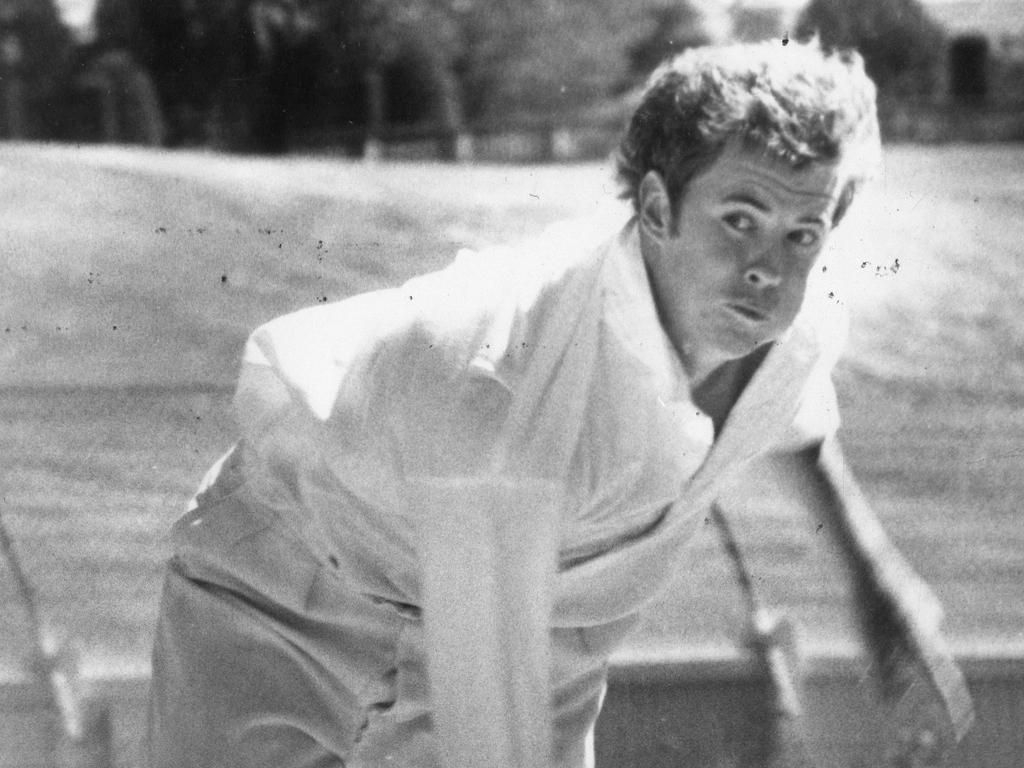
Kerry O'Keeffe
What was your favourite ground to play at?
I have to say The Parks in Oxford, for its natural beauty, history and wonderful Golden Age pavilion built in 1881. There is no better place to play (or watch) cricket on a warm English summer’s day.
Who are the three players from your playing days at the top of the list for a Saturday afternoon barbeque?
I would probably nominate my old Sydney Uni mates, particularly Gary Lennon, Duncan McLennan and St John Frawley. We played together in that Poidevin-Gray side as well as in Grade cricket, when we had so many fun adventures. Gary, a leg spinner from Tamworth originally, is now CFO of National Australia Bank, living in Melbourne. Duncan, a hard-hitting middle order batsman, is one of KPMG’s lead audit partners in Australia. St John, who bowled off spin, is a lawyer in Melbourne. We are all so responsible now, but I know when we get together the larrikin streak returns.
What are your hobbies?
Family, bike riding, gardening, cooking, reading.
What’s the best advice you’ve received?
My grandmother, who I mentioned earlier, told me as a child: “You need to know something about everything and everything about something”. I think I have done pretty well in the former, but perhaps not so well with the latter.
What is your occupation and who do you work for?
I am currently doing some consulting work, having left a full-time job last year (COVID-related). Before that I spent 15 years at Macquarie Bank, mainly in funds management and corporate finance roles relating to real estate, also in risk management and lending. I am currently looking for new opportunities, in both executive and non-executive capacities, and would be delighted to receive suggestions!
Are you still involved in cricket and if so, in what capacity?
Apart from playing with I Zingari, I am currently updating their history which should be published later this year. The club was formed in Australia in 1888 (in 1845 in England) and has a wonderful story. In the last 10 years I have toured with IZ to England (twice), India and New Zealand (three times), as well as to other places in Australia. My family has come along – we have seen some fascinating places together and formed so many family memories along the way, all with cricket as the common theme.
I have coached my three sons in junior cricket - they have more or less grown up now.
I am keen to be involved in cricket in other ways in the future – the game has been so very good to me and I think I have something to offer the future of the game on a variety of levels.
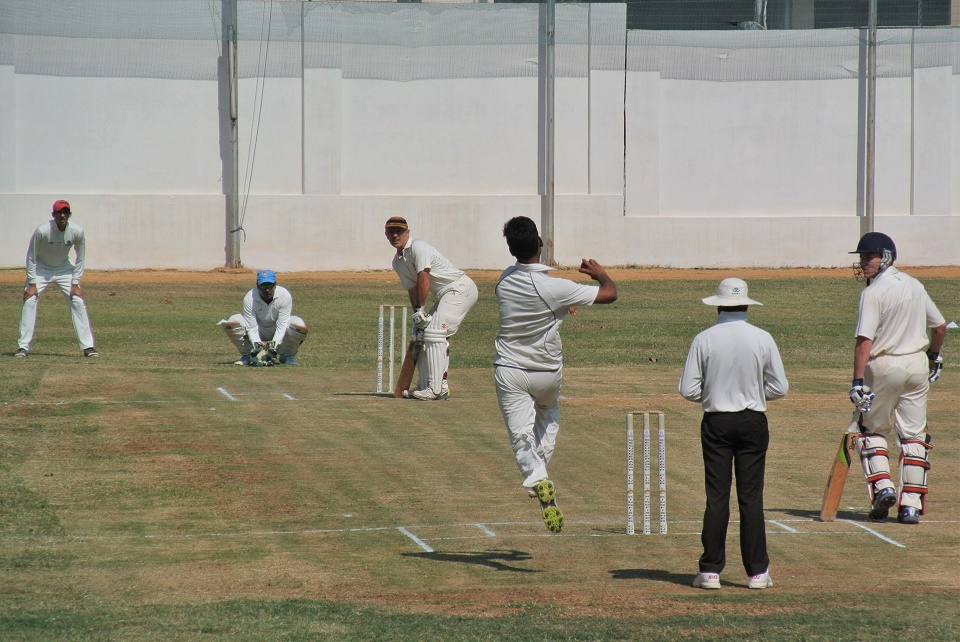
Geoff batting in India in 2016 with his son Mark at the non strikers end
If you were running Cricket NSW what would your 2 priorities to ensure cricket in the state remained strong and successful on and off the field?
Less representative cricket for youngsters – too many talented young cricketers get burnt out in their mid-teens, largely due to parental pressure, and give the game away.
I would also prioritise access to good quality grounds and turf wickets – as someone once told me: if you want to build a strong cricket club, you start in the middle of the ground and work outwards from there. The same principle applies to the game in its entirety.








